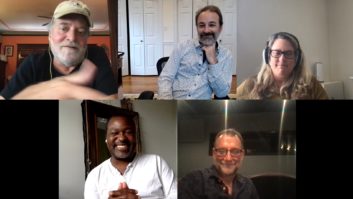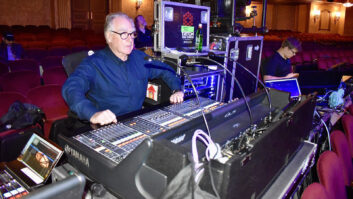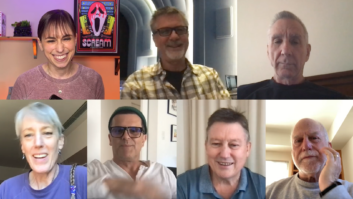This month’s cover was a long time coming. It started a couple of years back in Miami, at a Remix Hotel, when Matt Knobel walked me down Collins Avenue in South Beach to get a sneak peek at this studio he was helping build with Hotel Setai, in partnership with Lenny Kravitz. It’s a sweet room, with an SSL C200, Pro Tools and multiple monitoring options, including my first look at Focal. Ocean views, lots of glass. It’s meant for an elite clientele. We wanted the cover, and we asked if Lenny would sit for it. He agreed to, but it never quite worked out; we couldn’t get the timing right.
Then a month or so back, we were told that Lenny was in the Bahamas, at his private facility, working on Negrophilia for a 2010 release. It’s a different kind of room, we were told, one that was built for Lenny’s sound.
And that’s why we’ve been pursuing Mr. Kravitz for a cover. His sound. Steeped in old-school influences, raised on an analog foundation, proficient in digital, this is an artist that knows recording. Five tape machines, including a Studer J37 1-inch 4-track once owned by Abbey Road, sit in the control room, with three of those machines tied into the CLASP system to use tape as an effect, recording directly into Pro Tools. The Helios console on page 10 he bought from Leon Russell. And the EMI-designed REDD 37, from Abbey Road Studio One and pictured on this month’s cover, he purchased 18 years ago on the advice of Henry Hirsch. There’s a Moog Modular, a LinnDrum, vintage mics, ATC monitoring, Fairchilds, APIs — you get the picture.
But this is not a wannabe tale of a celebrity who opened a room, then opened his checkbook. This is an artist who has been pursuing a sound since he first dove into music and recording in his early days in New York City. He bought the REDD 37 before he went Platinum, and it nearly depleted his account. He’s picked up pieces all along the way, and then, starting about eight years ago, asked Alex Alvarez and friends to start putting some racks together to build his getaway. He ended up with a one-of-a-kind studio sanctuary.
In many ways, Lenny is emblematic of all that we talk about in this magazine, combining the best of our vintage heritage with the most modern means of production. He works at home and he still books time in studios around the world. He writes, he plays most all instruments and he feels equally at home standing with a guitar, seated at the kit or listening in the control room. He designs his spaces, then hires top-notch talent to bounce ideas off of and fine-tune the acoustics. And he brings in engineers for the duration of a record. When it came time to pick photos to represent his studio in Mix, he pushed for the vintage tape machines. He’s definitely an artist who has taken hold of his own career.
There are other artists, engineers and producers out there doing the same thing, combining the vintage and the modern, while fighting the good fight to deliver a sound. A signature sound. A dynamic sound. A quality sound. We salute you one and all.






